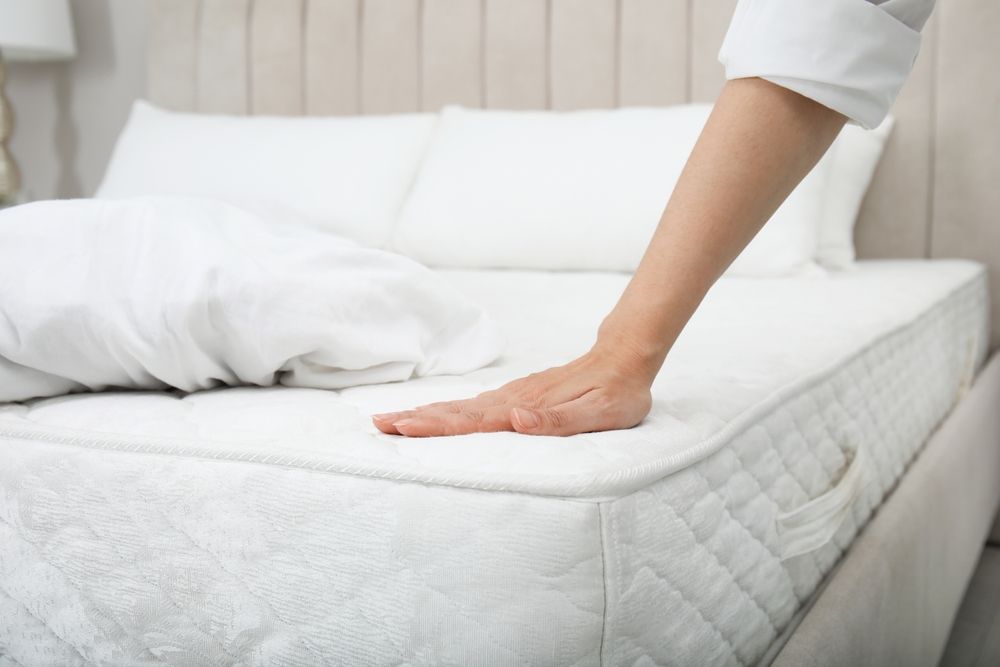Choosing the right mattress is one of the most important decisions you can make for your health and well-being. A great mattress supports proper sleep posture, reduces pressure points, and helps you wake up feeling refreshed. Among the many options available, memory foam mattresses have become extremely popular for their ability to contour to your body, relieve pressure, and provide customized comfort.
But not all memory foam mattresses are created equal. With so many brands, styles, and features on the market, how do you find the one that's right for you? This guide walks you through everything you need to know to choose the best memory foam mattress for your comfort.
1. Understand What Memory Foam Is
Memory foam, originally developed by NASA, is made from a material called viscoelastic polyurethane. It reacts to heat and pressure, molding to your body and providing personalized support.
Key Benefits of Memory Foam:
-
Excellent pressure relief
-
Spinal alignment support
-
Motion isolation (great for couples)
-
Reduced allergens compared to traditional innerspring mattresses
The material's ability to conform to your body makes it ideal for people with joint pain, back problems, or anyone seeking a comfortable, supportive sleep surface.
2. Know the Different Types of Memory Foam
Not all memory foam is the same. Modern mattresses often feature one of these main types:
-
Traditional Memory Foam: Provides classic contouring and pressure relief but can retain heat.
-
Gel-Infused Memory Foam: Infused with cooling gels to help dissipate body heat and keep you cooler during the night.
-
Plant-Based Memory Foam: Made partially with natural materials, offering better breathability and environmental friendliness.
-
Open-Cell Memory Foam: Designed with internal pockets that improve airflow for a cooler sleep.
Understanding the type of foam helps you pick a mattress that fits your comfort and temperature preferences.
3. Consider Your Sleeping Position
Your sleep position plays a big role in determining the best mattress firmness and support level.
If You’re a Back Sleeper:
-
Look for a medium-firm memory foam mattress.
-
You need support for the natural curve of your spine without excessive sinking.
If You’re a Side Sleeper:
-
Choose a softer to medium mattress.
-
Pressure relief for the shoulders and hips is essential to avoid discomfort.
If You’re a Stomach Sleeper:
-
Opt for a firmer mattress.
-
A too-soft mattress can cause your spine to sag, leading to back pain.
If You Switch Positions Often:
-
A medium-firm mattress offers a balanced feel that accommodates multiple sleeping styles.
Selecting a mattress based on your primary sleep position ensures better comfort and reduces aches and pains.
4. Check Mattress Density and Firmness
Two important characteristics to evaluate when choosing a memory foam mattress are density and firmness.
-
Density (measured in pounds per cubic foot) affects durability and support. High-density foam (5+ lbs/ft³) is more durable and supportive, while low-density foam is softer but may wear out faster.
-
Firmness refers to how soft or firm the mattress feels. Most brands rate firmness on a scale from 1 (very soft) to 10 (very firm).
A mattress that’s too soft may not offer enough support, while one that's too firm may not relieve pressure points effectively. Testing mattresses when possible, or reading detailed reviews, can help you find the right balance.
5. Look at Mattress Thickness
Memory foam mattresses typically range from 8 to 14 inches thick. Thickness affects both comfort and durability.
-
8–10 inches: Suitable for lighter individuals and guest beds.
-
10–12 inches: Good for most adults, offering a balance of support and comfort.
-
12+ inches: Offers enhanced cushioning and support for heavier individuals or those with chronic pain.
Keep in mind that thicker mattresses often include multiple layers designed for different functions, such as cooling, contouring, and support.
6. Consider Cooling Features
One common complaint about memory foam is that it tends to trap body heat. Fortunately, many modern memory foam mattresses include cooling technologies.
Cooling Features to Look For:
-
Gel-infused memory foam layers
-
Open-cell foam design for airflow
-
Breathable covers made from bamboo or cotton
-
Phase-change materials that regulate temperature
If you tend to sleep hot, prioritize mattresses designed with cooling features for a more comfortable night's sleep.
7. Evaluate Motion Isolation
Memory foam mattresses are excellent at minimizing motion transfer, making them a great choice for couples.
If you share a bed with a restless sleeper—or if you have pets who jump on and off the bed—a memory foam mattress can absorb movements and prevent you from being disturbed during the night.
Motion isolation is one of memory foam's standout benefits compared to innerspring or hybrid mattresses.
8. Think About Edge Support
Edge support matters if you tend to sleep near the edge of the bed or sit on the sides frequently.
While traditional memory foam mattresses don't have the strongest edge support, many newer models reinforce the perimeter with higher-density foam or additional materials.
Good edge support helps maintain the mattress shape and maximizes usable sleep surface, making it especially important for couples sharing a smaller bed.
9. Research Durability and Warranty
A memory foam mattress is an investment, so you want one that will last.
Factors Affecting Durability:
-
Higher-density foams generally last longer.
-
Good construction quality improves lifespan.
-
Look for mattresses with generous warranties (10 years or more).
Reading customer reviews about sagging or wear over time can also give valuable insights into a mattress’s long-term performance.
10. Understand Return Policies and Trial Periods
Even with extensive research, you won't know for sure if a mattress is right for you until you sleep on it.
Fortunately, many online mattress brands offer risk-free trial periods, typically ranging from 90 to 365 nights. If you’re unsatisfied, you can often return the mattress for a full refund.
Be sure to check:
-
Trial period length
-
Return conditions
-
Any fees associated with returns
Choosing a mattress with a strong trial period gives you peace of mind with your purchase.





